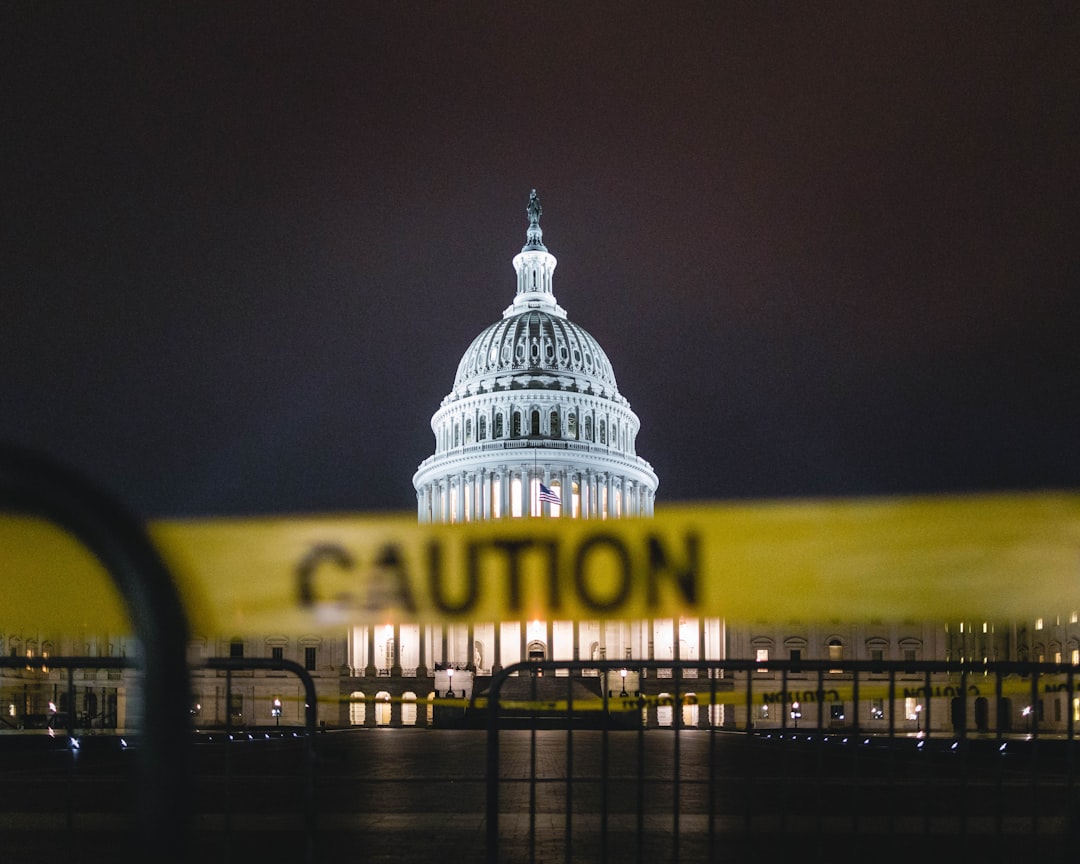The Unlikely Green Champion Who Made History

Richard Nixon signing environmental legislation on New Year’s Day 1970 was like watching a boxing match end with a handshake—totally unexpected but it happened. The National Environmental Policy Act (NEPA) was signed into law by President Richard Nixon on January 1, 1970, launching what would become the most significant environmental decade in American history. Think about it this way: if the environment was a broken-down car, Nixon didn’t just pump the brakes—he rebuilt the entire engine. President Richard Nixon recognized the Clean Air Act as a beginning, stating, “I think that 1970 will be known as the year of the beginning, in which we really began to move on the problems of clean air and clean water and open spaces for the future generations of America”. What’s shocking is that this president, who privately called environmentalists people who wanted to “go back and live like a bunch of damned animals,” ended up creating the foundation of modern environmental protection. Environmentalists wanted to “go back and live like a bunch of damned animals,” he told Ford Motor Company chairman Henry Ford during a 1971 meeting.
The Clean Air Act—When Politics Actually Worked

The Clean Air Act was signed by President Richard Nixon on December 31, 1970 to foster the growth of a strong American economy and industry while improving human health and the environment. Picture this: Congress passed this landmark legislation with a vote of 374-to-1 in the House and unanimously in the Senate. The bipartisan piece of legislation passed unanimously in the U.S. Senate and 374-to-1 in the House of Representatives, before being signed into law by President Richard Nixon on December 31, 1970 under the banner of protecting clean air for “future generations of America.” It was like watching Democrats and Republicans agree that water is wet—rare but undeniably real. From 1970 to 2022, total emissions of the six major air pollutants covered by NAAQS dropped by 78 percent in the United States, despite increases in gross domestic product, vehicle miles traveled, and population size during the same time frame. The results speak louder than any political speech ever could. Carbon monoxide (CO) emissions have decreased by more than 80% since 1970, primarily due to improvements in engine design.
Creating the EPA—Environmental Superhero Headquarters

Administrator Ruckelshaus was confirmed by the Senate on December 2, 1970, which is the traditional date we use as the birth of the agency. Nixon basically created environmental superhero headquarters when he established the EPA. In early 1970, as a result of heightened public concerns about deteriorating city air, natural areas littered with debris, and urban water supplies contaminated with dangerous impurities, President Richard Nixon presented the House and Senate a groundbreaking 37-point message on the environment. Before the EPA, environmental protection was scattered across different agencies like puzzle pieces in different boxes. Nixon took those pieces and created one powerful organization with teeth to bite back at pollution. The Clean Air Act (CAA) gave the Environmental Protection Agency (EPA) the power it needed to take effective action to fight environmental pollution. Today, the EPA continues to be the watchdog that keeps our air and water clean, proving that sometimes government agencies actually work.
NEPA—The Environmental Constitution

NEPA was the first major environmental law in the United States and is often called the “Magna Carta” of Federal environmental laws. Imagine if every government project had to pass an environmental health check before getting the green light—that’s exactly what NEPA created. NEPA’s most significant outcome was the requirement that all executive Federal agencies prepare environmental assessments (EAs) and environmental impact statements (EISs). On January 1, 1970, at around 10 am, President Nixon signed NEPA (Public Law 91-190) during a holiday stay at his home, known as the “Western White House,” in San Clemente, California. This wasn’t just paperwork—it was a revolutionary idea that forced the government to think before acting. The Alaskan pipeline, the work in the everglades–and hundreds of other projects–faced delays, court battles, and outright cancellations because of flawed or incomplete EISs. More than 100 countries around the world copied this idea, making Nixon’s signature ripple across the globe.
NOAA—Weather Wizards and Ocean Guardians

NOAA was established within the Department of Commerce via the Reorganization Plan No. 4, and formed on October 3, 1970, after U.S. President Richard Nixon proposed creating a new agency to serve a national need for “better protection of life and property from natural hazards… for a better understanding of the total environment… [and] for exploration and development leading to the intelligent use of our marine resources”. Think of NOAA as the ultimate environmental multitool—weather forecasting, fisheries management, and ocean research all rolled into one. Thanks to NOAA’s forecasts and early warning systems, the U.S. has dramatically reduced fatalities from weather disasters over the past decades. Each advance in forecasting – whether better Doppler radar or faster alerts to cell phones – translates into more lives saved. Nixon created an agency that literally saves lives every day by predicting hurricanes, tracking tsunamis, and monitoring climate change. NOAA’s Global Monitoring Laboratory keeps a famous record of carbon dioxide in the atmosphere (the Keeling Curve), which surpassed 400 parts per million in recent years, a level not seen in human history. Today, when you check the weather on your phone, you’re using Nixon’s environmental legacy.
The Endangered Species Act—Last-Chance Lifeline

Designed to protect critically imperiled species from extinction as a “consequence of economic growth and development untempered by adequate concern and conservation”, the ESA was signed into law by President Richard Nixon on December 28, 1973. Nixon looked at America’s disappearing wildlife and said “not on my watch.” “My new proposal would make the taking of endangered species a Federal offense for the first time,” he told Congress, “and would permit protective measures to be undertaken before a species is so depleted that regeneration is difficult or impossible.” The numbers tell an incredible story of recovery. Before the law, only 417 breeding pairs of bald eagles were known to live in the lower 48 states. By 2006, there were more than 9,700 pairs. The wolf population grew from just a few hundred before the ESA to more than 5,000 today. Nothing is more priceless and more worthy of preservation than the rich array of animal life with which our country has been blessed, Nixon declared when signing the Act. It’s like having a wildlife emergency room that actually saves patients.
Marine Mammal Protection Act—Ocean Life Bodyguards

MMPA was signed into law on October 21, 1972, by President Richard Nixon and took effect 60 days later on December 21, 1972. Nixon basically hired bodyguards for whales, dolphins, and seals when he signed this groundbreaking law. Fifty years ago in 1972, Congress passed the Marine Mammal Protection Act in response to growing concerns that certain species and populations of marine mammals were in danger of extinction or had been depleted as a result of human activities. The law was like putting up a “Do Not Disturb” sign around every marine mammal in American waters. Since it was enacted, no marine mammal species have gone extinct in U.S. waters. The Act’s protections have stopped the decline of many marine mammal populations and have led to the recovery of several, such as populations of humpback whales, gray whales, gray seals, and California sea lions. This Act set the global benchmark for marine mammal conservation as the first piece of legislation to call specifically for an ecosystem-level approach to wildlife protection. It’s proof that sometimes the government can actually get things right the first time.
Legacy of Parks Program—Urban Green Spaces Revolution

The Nixon administration initiated many of the most important, and enduring, environmental policies in American history including: the signing of the National Environmental Policy Act, the creation of the Environmental Protection Agency, the signing of the Clean Air Act of 1970, the creation of the National Oceanic and Atmospheric Administration, the signing of the Endangered Species Act, the signing of the Marine Mammal Protection Act and the creation of the Legacy of Parks program, which converted more than 80,000 acres of government property to recreational use in 642 new parks. Picture abandoned military bases and unused federal land transforming into playgrounds, hiking trails, and community gathering spots. Nixon’s Legacy of Parks program was like urban recycling on steroids—taking land that served one purpose and giving it new life as green space for families. The initiative, introduced by President Nixon in 1971, converted closed federal lands to public use. This wasn’t just about creating pretty spaces; it was about democratizing access to nature in urban areas where concrete often dominates the landscape. When Nixon converted 80,000 acres into 642 new parks, he was essentially saying that every American deserved a patch of green to call their own.
The Political Paradox—Green Actions, Anti-Green Feelings

But Nixon knew a social movement when he saw one. And, as Meir Rinde notes for the Science History Institute, Nixon was personally fond of national parks and the outdoors. More than anything, Nixon was a pragmatist. He may not have personally resonated with environmentalism, but he recognized people’s sense of urgency behind the movement and responded. Nixon was like a chef who hated vegetables but cooked the best salad in town because that’s what customers wanted. In a private meeting with Henry Ford II, Nixon said environmental predictions were “greatly exaggerated” and he blasted environmentalists for wanting humans to “go back and live like a bunch of damned animals.” Yet this same president created more environmental protections than most politicians who actually liked nature. “Environmental protection represented, without doubt in my mind, the single most significant area of domestic policy accomplishment of the Nixon administration,” Russell Train, 2nd EPA Administrator & President of the World Wildlife Fund. It’s fascinating how political pragmatism sometimes produces better results than passionate belief.
Bipartisan Environmental Magic—When Politics Served Nature

In 1973, there was bipartisan consensus that environmental harms, as measured by scientists, demanded governmental solutions. The 1970s were like a political unicorn—a time when Democrats and Republicans actually agreed that clean air and water were good ideas. This was made possible because of the high priority assigned to environmental issues on the public agenda following Earth Day. Bipartisan support for environmental issues in the Senate undoubtedly played a major role in the success of the administration’s legislative agenda. Nixon rode this wave of environmental concern like a skilled surfer, channeling public pressure into concrete policy achievements. The next 70 years saw a groundswell of public awareness of environmental problems and support for wildlife conservation, which initiated political activism. It’s almost nostalgic to think about a time when protecting the environment wasn’t considered a partisan issue, but rather a shared American value that transcended political party lines.
Early Climate Change Awareness—Nixon’s Crystal Ball

High-level officials inside the Nixon administration debated climate change and the impacts of sea-level rise, extreme temperatures, and fossil-fuel consumption as early as 1969, according to declassified documents. Nixon’s team was having climate change conversations before most people even knew what the greenhouse effect was. Several months later, Hubert Heffner, Deputy Director of the Nixon administration’s Office of Science and Technology, responded to Moynihan, acknowledging that atmospheric temperature rise was an issue that should be looked at. “The more I get into this, the more I find two classes of doom-sayers, with, of course, the silent majority in between,” he wrote. “One group says we will turn into snow-tripping mastodons because of the atmospheric dust and the other says we will have to grow gills to survive the increased ocean level due to temperature rise.” These internal discussions show that Nixon’s environmental policies weren’t just about immediate pollution problems—they were forward-thinking responses to long-term environmental threats. Throughout this featured section, the authors predict a future of melting ice caps, rising sea levels, and acidification of water sources. Nixon’s administration was essentially peering into an environmental crystal ball and taking action based on what they saw.
The Santa Barbara Oil Spill—Crisis that Sparked Action

Oil leaked out at an estimated rate of 210,000 gallons a day, creating a heavy slick across much of the ocean channel. A few days later horrified Santa Barbara residents woke to find their beaches befouled with tar and dotted with dead and dying oil-drenched birds. The 1969 Santa Barbara oil spill was like a environmental wake-up call that nobody could ignore—not even a president who was skeptical of environmental activism. The public outrage in reaction to the Santa Barbara oil spill in early 1969 occurred just as the NEPA legislation was being drafted in Congress. Nixon saw the oil-covered beaches and dying wildlife on television, and suddenly environmental protection became a political necessity rather than just an option. The images of oil-soaked birds struggling to survive became the poster children for environmental action, creating public pressure that even a pragmatic politician like Nixon couldn’t ignore. This disaster demonstrated how environmental crises could quickly become political liabilities, motivating even reluctant leaders to take decisive action.
Environmental Impact That Outlasted the President

Nixon made the environment healthier and safer and we continue to be the beneficiaries of his green legacy. Nixon’s environmental achievements are like a fine wine—they’ve only gotten better with age. Although its exact benefits depend on what is counted, the Clean Air Act has substantially reduced air pollution and improved US air quality—benefits which EPA credits with saving trillions of dollars and many thousands of lives each year. Every time you breathe clean air, drink safe water, or visit a national park, you’re experiencing Nixon’s environmental legacy. The Supreme Court of the United States described it as “the most comprehensive legislation for the preservation of endangered species enacted by any nation”. What’s remarkable is that these laws didn’t just work for a few years—they created institutional frameworks that continue protecting the environment decades later. More than 100 nations around the world have enacted national environmental policies modeled after NEPA. Nixon’s environmental legacy went global, proving that good policy ideas have no borders.
Looking back, Nixon’s environmental record reads like a green revolution led by an unlikely champion. So should Nixon be remembered as a green champion? The man who privately mocked environmentalists created more lasting environmental protections than presidents who genuinely loved nature. It’s a reminder that sometimes the most important changes come from the most unexpected sources, and that political pragmatism can be more powerful than passionate belief when it comes to actually getting things done. Did you expect that a president remembered for Watergate would also be remembered as the father of modern environmental protection?







